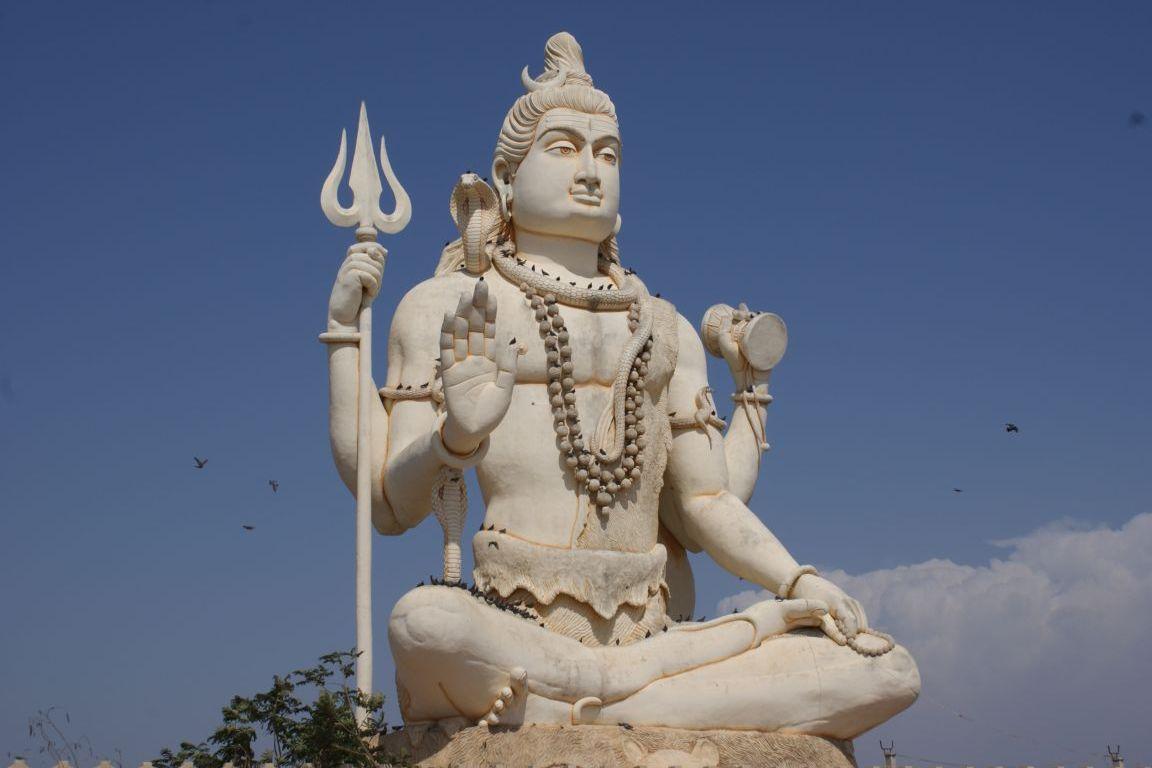
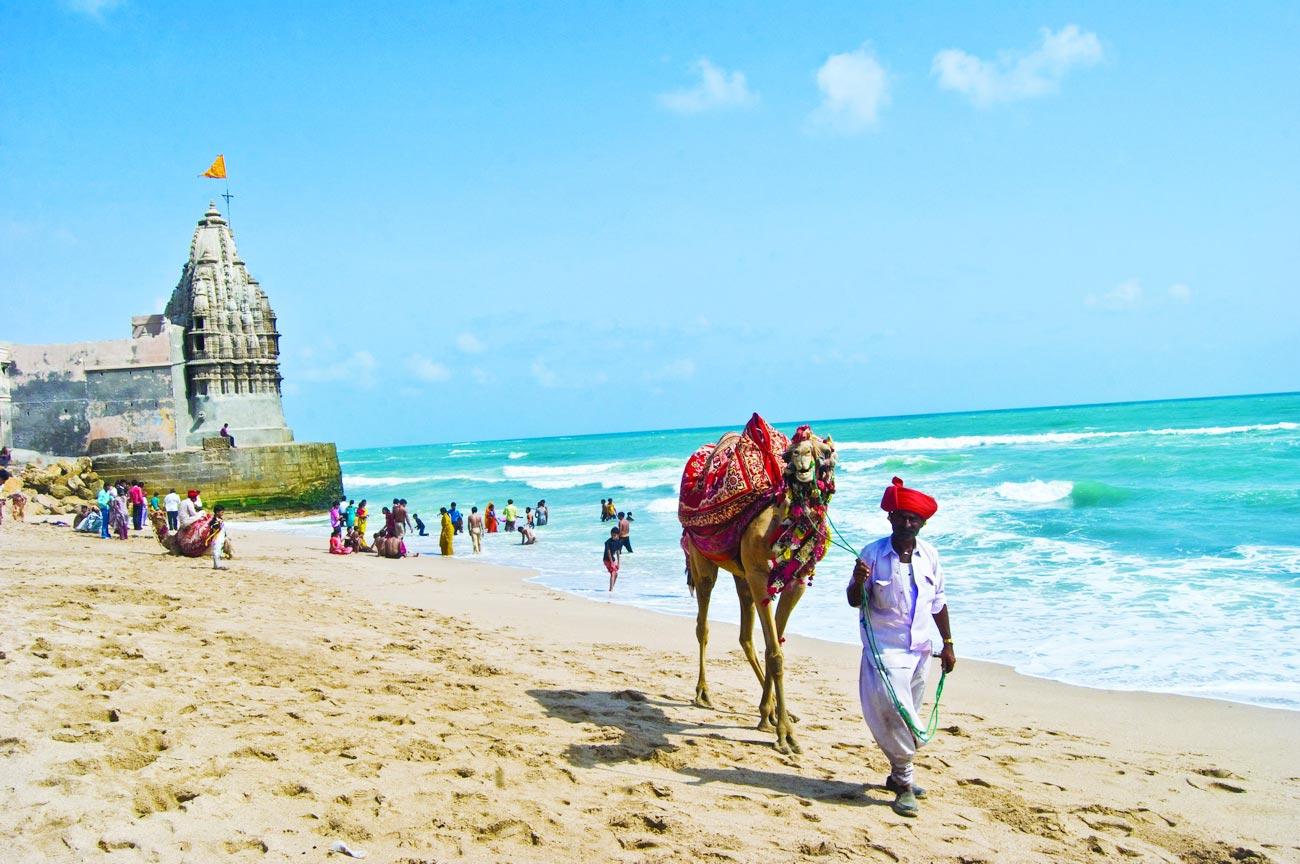
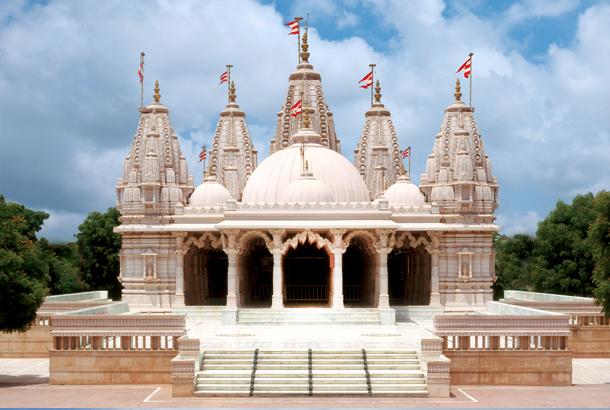
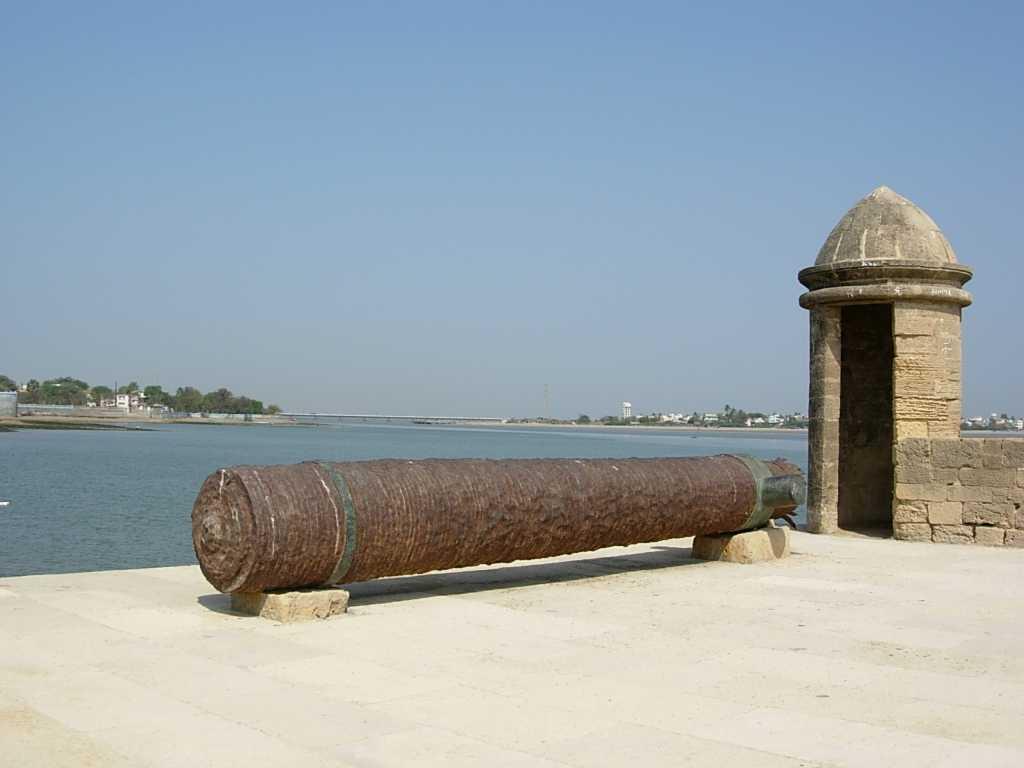
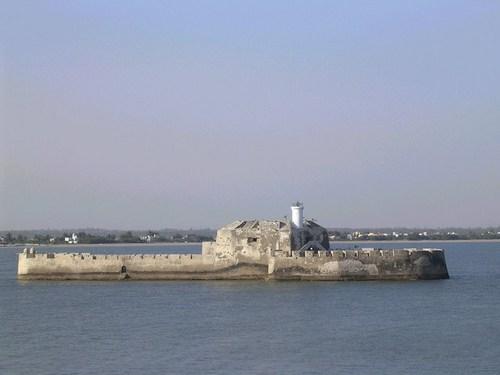
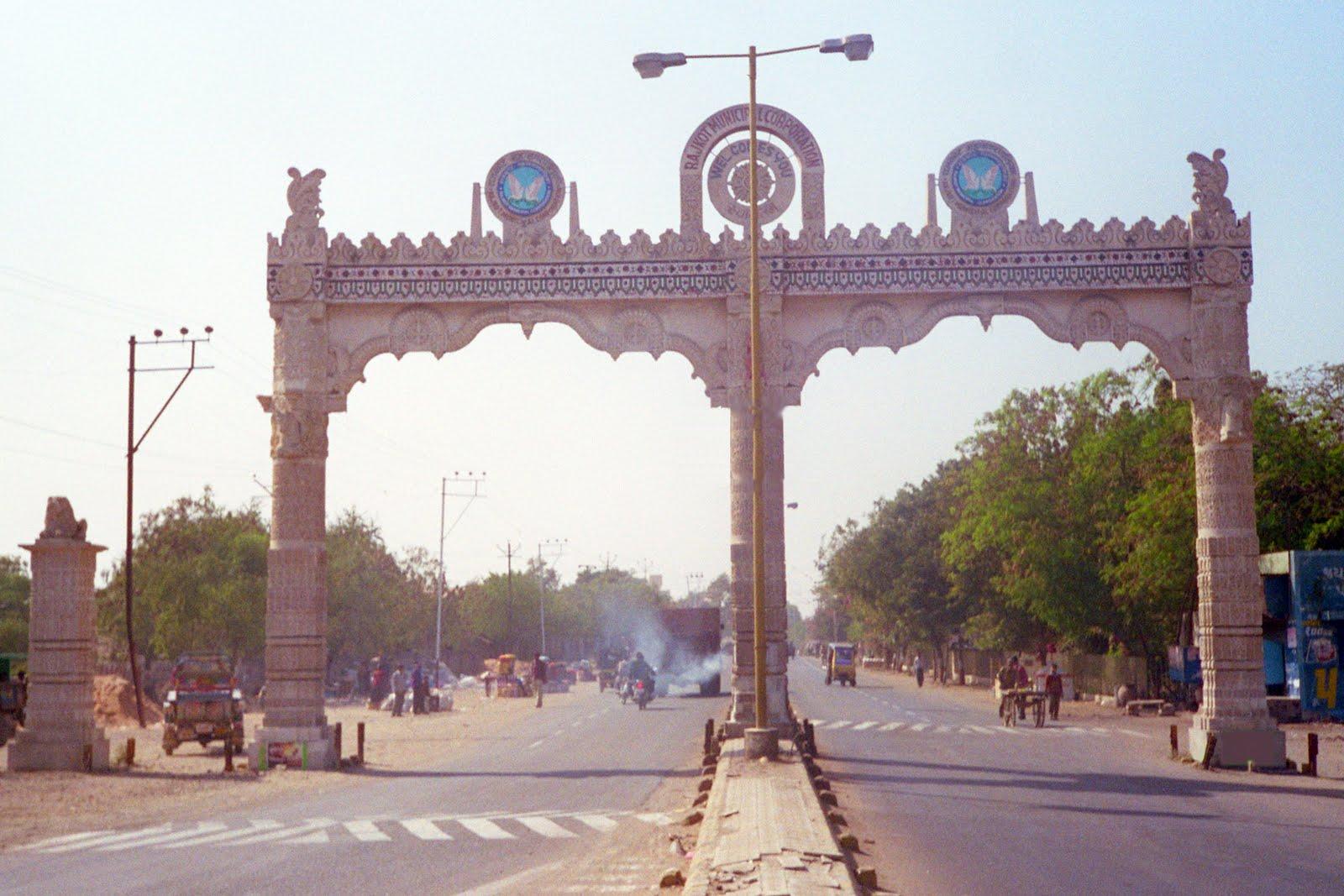
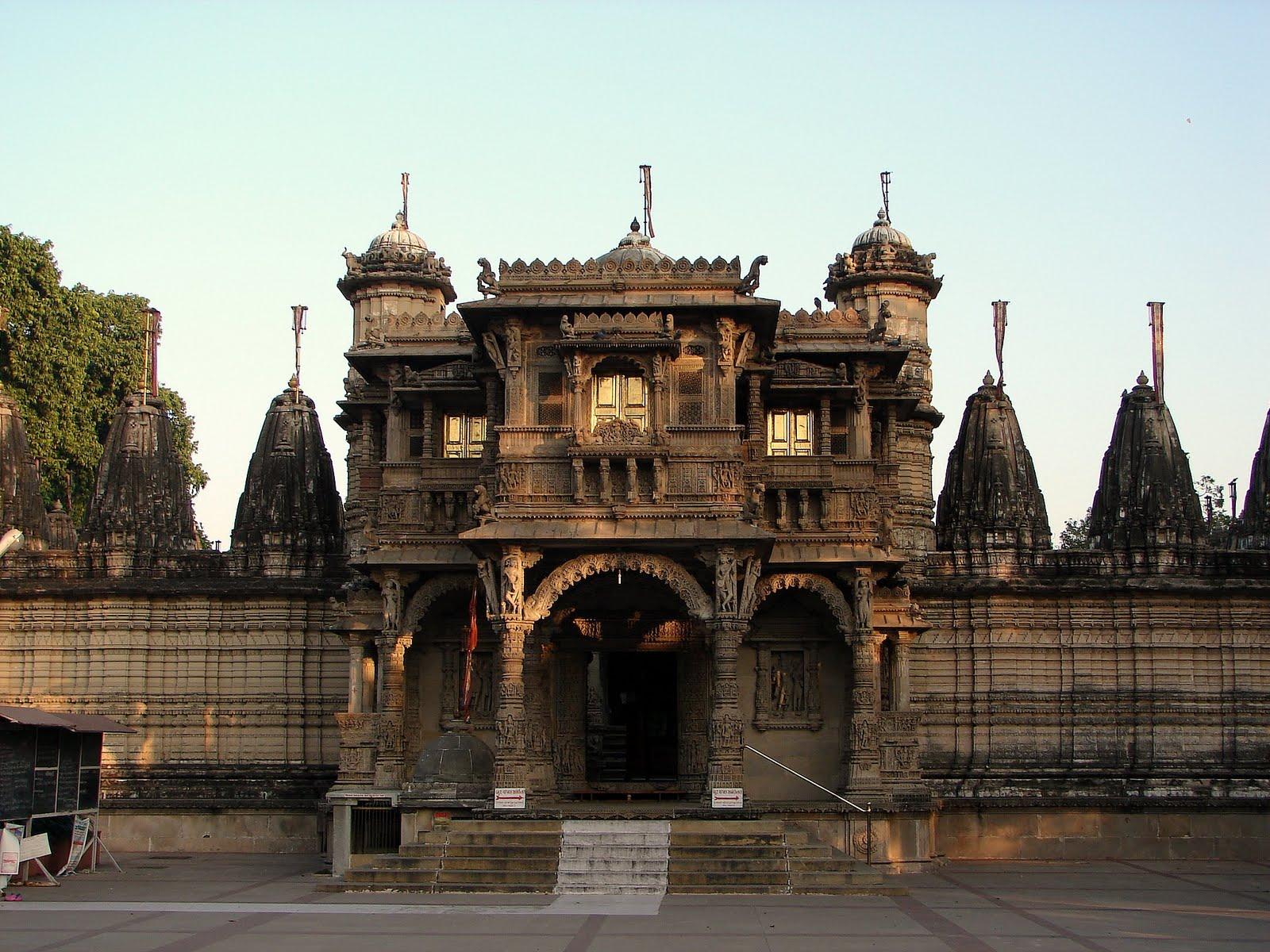
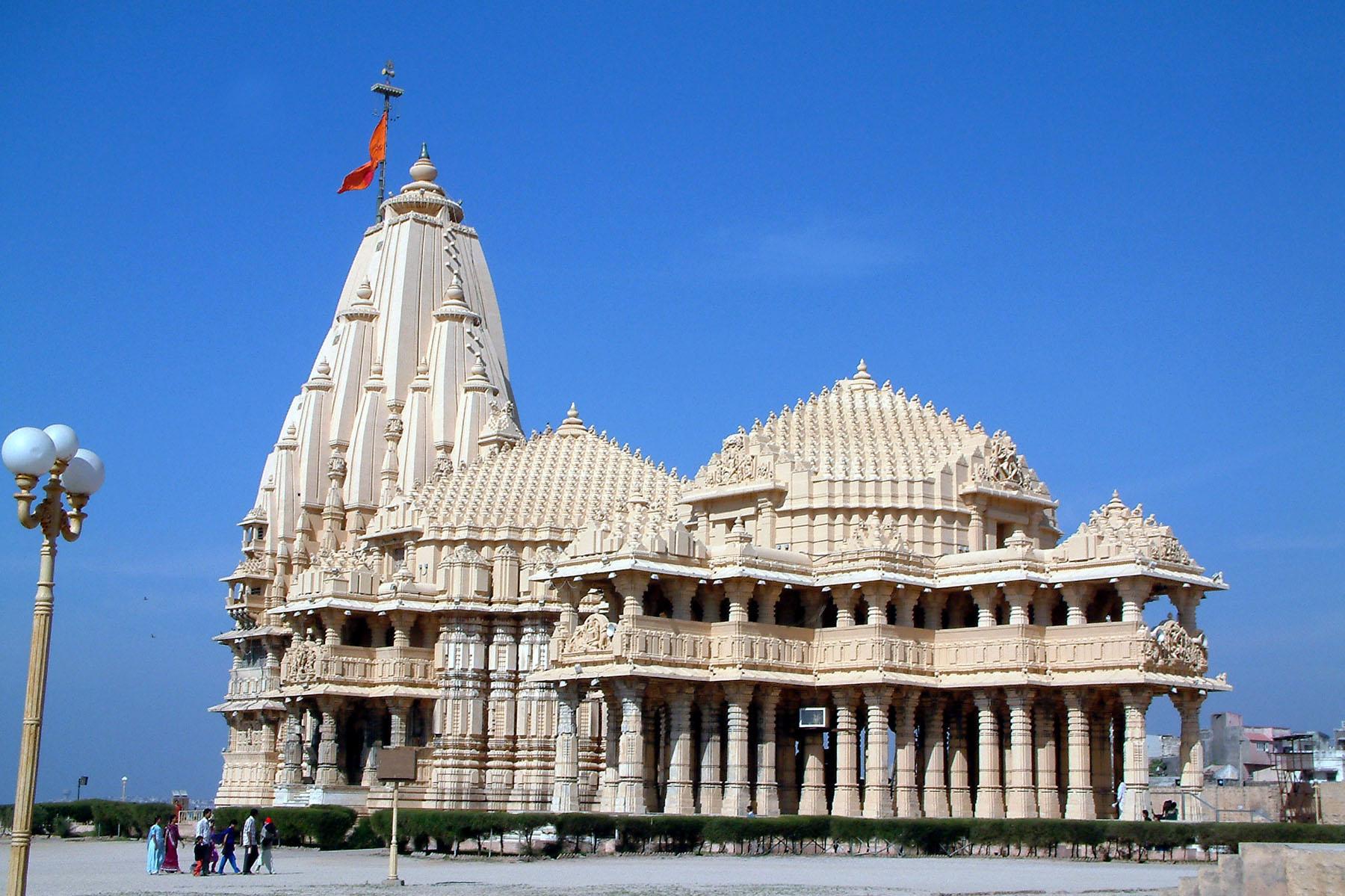
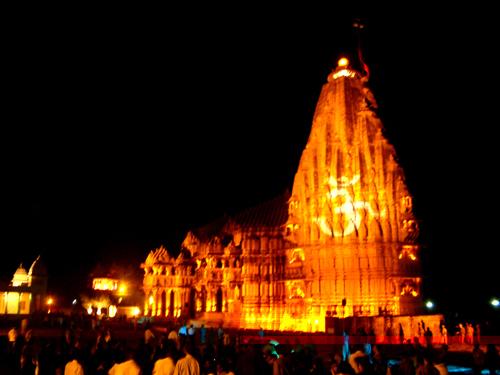
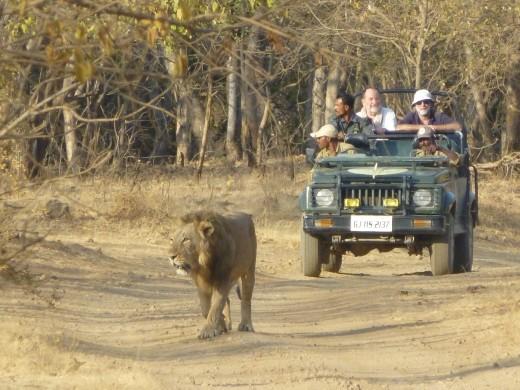
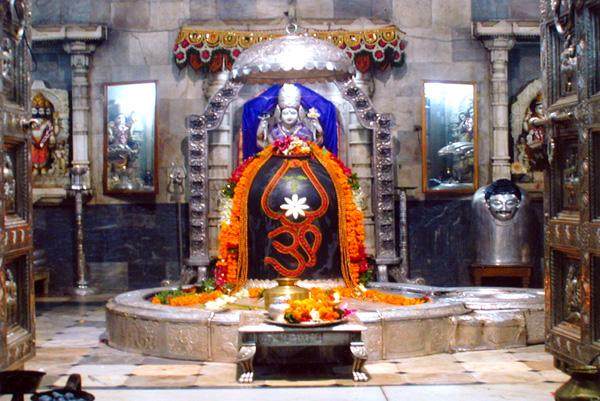
Barely glimpsed by many travellers scuttling between the state of Mumbai (Bombay) and Rajasthan, Gujarat is an easy side-step off the well-beaten tourist trail. Here, its capital, Ahmedabad, retains some charm amid its chaos. Ahmedabad, also called Amdavad, Ahmadabad or Ahemdavad is Gujarat’s major city and a startling metropolis with a long history, many remarkable buildings, and a fascinating maze of an old quarter, excellent museums, fine restaurants and fabulous night markets.
You need a little stamina to get to know the city better, as it’s quite spread out and moving around can be a bit of a task. The old city lies on the east side of the Sabarmati River and used to be surrounded by a 10km-long wall, of which little now remains except 15 formidable gates standing as the forsaken islands amid swirling, cacophonous commotion of the city. The new city on the west side of the river, nearly all built in the last 50 years, has wider streets, several major universities, and many middle-class neighbourhoods.
Around Ahmedabad, Bhavnagar is an excited, sprawling industrial centre with a colourful old core that makes a base for journeys to nearby Shatrunjaya and Blackbuck National Park. Visitors make it a point to be amidst the beauty of the nature of the National Park. As you venture through the world made by the man, embrace the change of the quietness of the deep. Sasan Gir. As the woods of the Gir will disguise you, eventually the subtle faces of this deep will be unveiled.
Spend some majestic time with the majesty in Gir, whose history has a strong and long connection to the antiquity. Be in the dwelling of the Gir lions, once which stretched west, across Asia, as far as Greece. These were the lions that Anthropolis and Deniel faced, the lions of ancient Greece and Bible. These were the same lions that the Romans set up on the Christians in the coliseum. Grab your chance to visit the very last of this ancient race, still living in Gir.
However, Diu is different. This tiny island linked by a bridge to Gujarat’s southern coast is infused with Portuguese history; its major architectural landmarks include three churches and a seafront fort; the streets of the main town are remarkably clean and quiet once you get off the tourist-packed waterfront strip. With Daman, it is still governed from Delhi as part of the Union Territory of Daman & Diu and is not part of Gujarat. The northern side of the island of Diu, facing Gujarat, is tidal marsh and salt pans, while the southern coast alternates between limestone cliffs, rocky coves and sandy beaches.
Somnath’s famous, phoenix-like temple will stand gazing at you in neat gardens above the beach, 6km southeast of Veraval. The sea below gives it a wistful charm of the endless time. Somnath celebrates Kartik Purnima, marking Shiva’s killing of the demon Tripurasura, with a large colourful fair, a spectacle worth witnessing. Legend had it that the moon God Somraja first erected Somnath, a temple made of gold. This was rebuilt by Ravana in silver, by Krishna Vasideva in wood, and by Bhimdev in stone; all bedecking the Phallic Stone, the heart of the temple, one of the 12 most sacred Shiva shrines, known as jyotirlinga.
Witness the self-illuminating temple in the coastal serenity that even prompted the most unwelcoming visit of the infamous looter Mahmud of Ghazni from Afghanistan. Gazni was baffled with the wealth of the temple, which also included 300 musicians, 500 dancing girls and even 300 barbers. It took two days to take the temple town, where 70,000 Hindu defenders were slaughtered. So began a pattern of Muslim destruction and Hindu rebuilding that continued for centuries. The temple was again razed in 1297, 1394 and finally in 1706 by Aurangzeb, the notorious Mughal ruler. After that, the temple wasn’t rebuilt until 1950.
Dwarka literally feels like the end of the earth. Enter the city of the God, a remote pilgrimage spot at the extreme western tip of the Kathiawar peninsula. This is one of the four most holy Hindu sites in India, where Krishna Vasudeva built his capital after leaving Mathura. The lord here blesses his devotees with wide, benevolent eyes, gazing for time immemorial, from his seat, 60 miles away from his submerged kingdom of 32,000 years old, which is twice the size of Manhattan.
Before you conclude your visit to Gujarat, come back to the civilization from the from beyond the realm of spirituality. Experience the time travel of the classic civilization in the old city of Rajkot, east of the newer centre, still has plenty of character, with narrow streets, markets, and farmers still selling ghee on street corners. Rajkot was founded in 1612 by Jadeja Rajputs and had been the headquarters of the Western India States Agency, Britain’s administrative centre for some 400 princely states in Saurashtra, Kachchh and northern Gujarat, in the colonial era.
Day 01 : Ahmedabad
Arrive at Ahmedabad. On arrival, check in to your hotel. Proceed to visit Gandhi Ashram, City museum and Hathising Jain Temple. Later in the evening proceed to visit Adalaj Step well and Akshardham Temple. Overnight at hotel.
Day 02 : Ahmedabad – Lothal – Velavadar – Bhavnagar (200 km/4 hrs)
After breakfast start for Bhavnagar. En-route visit Lothal. Lothal is one of the most prominent cities of the ancient Indus valley civilization. Also visit Velavadar. The Velavadar National park is known for the successful conservation of the blackbuck, wolf and the lesser Florican. Arrive at Bhavnagar. Later proceed to visit Nishkalank Mahadev Temple in Koliyak, Bhavnagar. Overnight at hotel.
Day 03 : Bhavnagar – Palitana – Sasangir (200 km/ 4 hrs)
After breakfast proceed to Sasanigir. Enroute visit Palitana. Palitana is the world’s only mountain that has more than 900 temples. Palitana temples and the mountain are considered the most sacred pilgrimage place by the Jain community, and is the world's largest Temple Complex with 3000 temples. Later arrive at Sasangir. Visit Gir Interpretation Zone. Overnight at hotel.
Day 04 : Sasangir – Diu (110 km/2 hrs)
In the morning take jeep safari to Gir national park. Later, proceed to beach town Diu. Visit St. Paul's Church, Diu Museum and Diu Fort. Evening is at leisure to laze and relax on the beach. Overnight at hotel.
Day 05 : Diu - Somnath (90 km/2 hrs)
After breakfast proceed to Somnath. On arrival visit Bhalka Tirth, Triveni Sagam, Geeta Mandir Chopati & Somnath Temple. In the evening attend Aarti and later watch light and Sound show. Overnight at hotel.
Day 06 : Somnath – Porbandar - Dwarka (230 km/5 hrs)
After breakfast, proceed to the sacred town of Dwarka. Enroute visit Porbandar. At Porbandar visit Kirti Mandir – the place where Gandhiji was born and Sudama Temple – The only Sudama Temple in the world. Later arrive at Dwarka. Visit Dwarkadeesh Temple. Overnight at hotel.
Day 07 : Dwarka – Jamnagar - Rajkot (250 km/5 hrs)
After breakfast take a trip to Bet Dwarka, visit Old Temple of Krishna. On the way to Bet Dwarka, visit Nageshwar Temple – One of the 12 Jyotilingams of Shiva, Rukmini Temple and Gopi Talav. Enroute visit in the evening, Bala Hanuman Temple at Jamnagar known for its nonstop Ramdhun since 1956 and it mentioned in Guinness Book of World Records. Later arrive at Rajkot. Overnight at hotel.
Day 08 : Rajkot - Ahmedabad (230 km/5 hrs)
After breakfast, proceed to Ahmedabad. Drop at airport/railway station.
Inclusions
Exclusions
|
HOTEL DETAILS |
|||
|
CATEGORY |
STANDARD |
DELUXE |
LUXURY |
|
Ahmedabad |
Hotel Legend or similar |
Hotel Shailly Inn or similar |
Country Inn Suites by Calson or similar |
|
Bhavnagar |
Hotel White Rose or similar |
Hotel Basil Park or similar |
Gen X 1589 Bhavnagar or similar |
|
Sasan Gir |
Hotel Aditya or similar |
Asiatic Lion Lodge or similar |
The Fern Gir Forest Resort or similar |
|
Diu |
The Hoka Resort or similar |
Hotel Apaar or similar |
Radhika beach resort or similar |
|
Somnath |
Hotel Somnath Sagar or similar |
Hotel Sukh Sagar or similar |
Hotel Lords Inn or similar |
|
Dwarka |
Hotel Krishna Inn or similar |
Goverdhan Greens Resort or similar |
Dwarkadhish Lords Eco Inn or similar |
|
Rajkot |
Hotel Europe Inn or similar |
The Evergrand Palace or similar |
The Grand Residency or similar |
COST DETAILS FOR PACKAGE (Rates Valid from 1st July to 30th Sep, 2015)
Per Person Price
|
CATEGORY |
STANDARD |
DELUXE |
LUXURY |
|
Min. 2 Pax |
21700 |
24500 |
29900 |
COST DETAILS FOR PACKAGE (Rates Valid from 1st Oct to 31th Mar, 2015)
Per Person Price
|
CATEGORY |
STANDARD |
DELUXE |
LUXURY |
|
Min. 2 Pax |
22300 |
26200 |
31900 |

Terms & Conditions:
Note:
In Case of exceptional circumstances where we are not in position to provide Hotels mentioned, shall offer similar Hotels
All tourists are advised to take comprehensive Insurance of their own
The timings given in itinerary and program may change without notice, keeping in mind local development
Visit to all Museums in program are subject to their remaining open on day of visit as per rules of competent authority
All Cost quoted are in Indian National Rupee
All expenses which are not included in the cost of package shall be paid directly by tourist at the time of checkout
The festival dates in India are based on Hindu system of astrology which is subject to the movement of moon in relation to earth. Therefore, there may be change in dates of festival by one day. We may alter the program by one or another to visit the festivals
All wildlife national parks remain closed from July till September due to monsoon
Supplements will be charged extra during festivals or fairs
Standard check-in time is 1400 hrs & check-out time is 1200 noon
Any hike in Govt. Taxes, Fuel etc., will attract a surcharge, to be paid prior to the departure date
 Loading..
Loading..